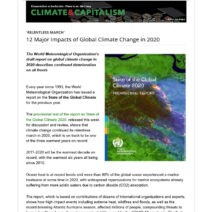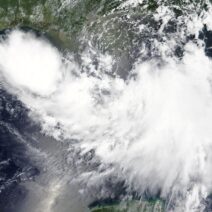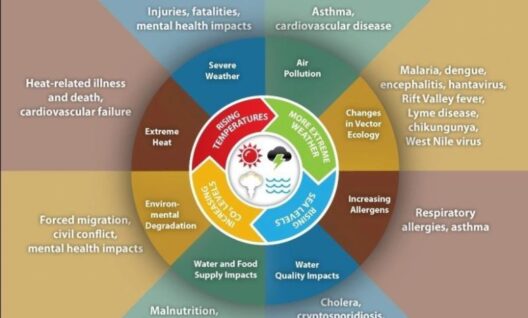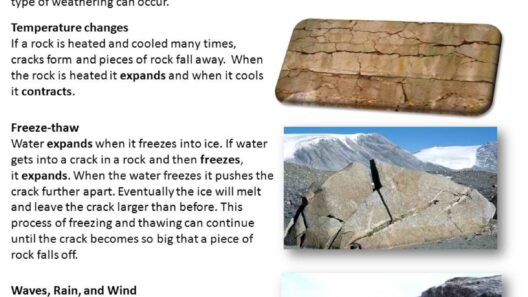In the landscape of environmental discourse, two terms often flutter vigilantly in the breeze of public consciousness: “global warming” and “climate change.” While they might seem as interchangeable as two leaves whispering through the same autumn wind, each embodies unique dimensions of our planet’s climatic narrative. To truly grasp the essence of these phenomena is to peer through the kaleidoscope of Earth’s atmospheric complexities, where temperature fluctuations and long-term shifts in weather patterns intermingle like a masterful tapestry woven from countless threads.
Imagine global warming as the hyperactive child dashing across the playground, hot from exertion and sparking a myriad of questions. This phenomenon primarily refers to the increase in Earth’s average surface temperature due to the accumulation of greenhouse gases, like carbon dioxide, methane, and nitrous oxide. These gases trap heat in the atmosphere, much like a blanket enveloping a sleeping child, insulating and preserving warmth. The atmosphere swells with the byproducts of industrial activity, deforestation, and other anthropogenic activities, igniting an increase in surface temperatures.
In contrast, climate change is the more contemplative adult, surveying the park from a bench, providing broader context and contemplating long-term shifts. Climate change encompasses global warming but extends its gaze to the myriad changes happening within the climatic systems. These alterations may include changes in precipitation patterns, shifts in seasons, more intense and frequent extreme weather events, and alterations in ocean systems. It is the dramatic score accompanying the symphony of our planet’s ecosystems, dictating the rhythm of life itself.
The interplay between these two entities is akin to that of a tree and its roots. While global warming is the visible aspect, manifesting as exaggerated warmth during an unusually hot summer, climate change delves deeper, embodying the undercurrents that affect weather systems, biodiversity, and human existence. The roots of climate change extend deep into ecological and social structures, influencing agriculture, water resources, and even regional conflicts over dwindling resources.
The implications of global warming are stark and immediate. Rising temperatures cook not just the air but also the oceans. The oceans have absorbed significant quantities of heat, transforming them into tepid cauldrons that spawn coral bleaching and the displacement of marine species. The melting of polar ice caps and glaciers constructs a harrowing narrative of rising sea levels, which threaten coastal communities with encroaching waters. As the planet simmers, frigid habitats and hot zones collide and merge into uncharted climatic realities.
Climate change, however, encapsulates this evolution, offering a more comprehensive viewpoint. The disappearance of seasonal patterns, the erosion of ice at unprecedented rates, and the resultant shifts in wildlife migration and phenology paint a portrait of an ecosystem in flux. It dares us to witness how bird species adapt their migration routes, or how plant species emerge earlier in spring, unmoored from their historical cycles. We are not mere spectators to this grand spectacle; we are stakeholders in a vibrant ecosystem, where our actions ripple across the intricate web of life.
One of the most alarming aspects of climate change is the cascading effect that global warming has on socio-economic structures. As temperatures rise, particularly in vulnerable regions, food security faces unprecedented challenges. Unpredictable weather patterns wreak havoc on crop yields, fostering population displacement and igniting conflicts over dwindling resources. This reality breeds fertile grounds for climate refugees, people who are forced to abandon their homes due to climate-induced hardships. Society finds itself entangled in a profound moral crisis, as the most vulnerable populations bear the brunt of a crisis they contributed the least to.
Climate change further manifests its presence through its relentless encroachment upon the health of our ecosystems. The symbiotic relationships between various species deteriorate as habitats transform. Trees, plants, and animals are thrust into a survival game, trying to adapt to increasingly inhospitable conditions. Biodiversity, a cornerstone of resilient ecosystems, teeters on the precipice of collapse. Species extinction becomes a haunting reality, where the loss of genetic diversity could compromise entire ecosystems, akin to removing a handful of colors from a painter’s palette.
Education plays a pivotal role in weaving the fabric of understanding about these intertwined phenomena. As public awareness evolves, delineating the nuances between global warming and climate change becomes paramount. Communities must rally together, fostering environmental stewardship that transcends individual actions and embraces the collective responsibility towards our planet’s future. By contextualizing climate narratives in local terms—expounding on personal experiences, community impacts, and intertwined destinies—we cultivate the fertile ground necessary for sustained action and empathy.
In the final analysis, while global warming signals the rise in temperatures—an urgent clarion call that can no longer be ignored—climate change weaves a larger canvas of transformation. Each brushstroke, be it the direct results of warming or the indirect repercussions on our ecosystems, tells a tale of interconnection, where every action matters. Only through a multifaceted understanding of both global warming and climate change can humanity forge a path toward sustainable solutions, ensuring the well-being of our planet and all its inhabitants.
In this intricate dance of elements and ecosystems, we find our place as guardians of the Earth, armed with knowledge, compassion, and an unwavering commitment to action. By fortifying our understanding of these phenomena, we equip ourselves to champion the cause of our planet, navigating the complexities with clarity and purpose. The future of our beautiful blue planet is not just in the hands of policymakers or scientists; it is in the hands of every individual willing to embrace their role in this critically urgent narrative.




